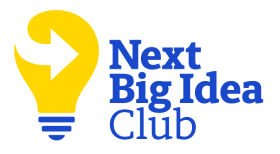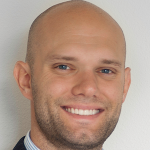Sophia Rosenfeld is the Walter H. Annenberg Professor of History and Chair of the History Department at the University of Pennsylvania. Her previous books include the award-winning title Common Sense: A Political History. Her writing has appeared in scholarly journals such as the American Historical Review and the Journal of Modern History, as well as in media publications including the New York Times, The Washington Post, and The Nation.
What’s the big idea?
There is such a thing as too many options. Nowhere is freedom-as-choice and choice-as-freedom more evident than in the United States. As important as the right to choose has been in various emancipation movements, there is a point at which choice can become a trap that goes too far.
Below, Sophia shares five key insights from her new book, The Age of Choice: A History of Freedom in Modern Life. Listen to the audio version—read by Sophia herself—in the Next Big Idea App.
1. Having choices makes us feel free.
Have you recently picked something—anything? Maybe a kind of sandwich, a political candidate, or a movie to watch from the comfort of your couch? Did you first consult a menu of options and decide which appealed to you? That answer is probably yes because this kind of choice-making is routine these days. I am also going to guess that the opportunity to make a choice was valuable to you, even if it didn’t fully register at the time.
When we make a menu-based choice, most of us experience it as a kind of freedom. At that moment, no one is telling us what to do, and we get what we want. Sometimes, we even feel we are defining ourselves in the process as distinctive people with distinctive tastes: vegetarians vs. meat eaters, fans of simple fare vs. foodies, etc. The same goes for choice-making about everything from ideas and beliefs to jobs, dates, or spouses. Choice is where political life, democracy, and consumer culture converge.
This is constantly being reinforced in our way of talking. Constitutions produced around the globe ever since the Second World War reflect this. You could also look at billboards and see this, too. The “right to choose” has become enshrined in everything from bills of rights to advertisements. For most of us, having options and being able to act on them in keeping with our desires is what feeling free (nowadays) is all about.
2. People didn’t always have as many choices—and they probably didn’t care.
Exaltation of choice for choice’s sake, or choice as the key sign of autonomy, is relatively new. Just a few centuries ago, being at the top of the social scale meant not having to worry about what to own, where to live, whom to marry, what to believe, or who should rule. These questions were, ideally, already settled, sometimes from birth. You can probably imagine how this must have been a sort of privilege, as it meant a life without constant hustling. Choice didn’t have the special status it has today for men or, especially, women.
Freedom was imagined differently. In the era of slavery and more rigid class structures, it had more to do with living without being dominated by someone else and with doing, of one’s own volition, what was right rather than wrong. We might say that the emergence of individualized and largely value-neutral choice as a stand-in for freedom is really the story of the development of modern life around much of the globe. It is the story of how we learned to shop, read selectively, choose a place of worship, pick dance partners and then life partners, vote in elections, and participate in the invention of whole fields of study—like psychology or economics—that explore how or why or when we make the choices we do.
“We tend to see our attachment to choice as natural, maybe even biological, rather than something particular to our historical moment.”
This story of how choice became the modern form of freedom has never been fully told or even recognized. That’s because we tend to see our attachment to choice as natural, maybe even biological, rather than something particular to our historical moment. However, once we see that we live uniquely in an age of choice as a result of historical factors, we also start to notice the many consequences of this development on how we live today.
3. Freedom of choice requires a lot of (largely invisible) rules.
As choices have grown across all kinds of sectors, from romance to politics to decorating your house, they have required new technologies to make them work. Think of catalogues, sample books, ballots, surveys, and all their internet counterparts, which require a display of all the available possibilities along with ways to register one’s selections. The steady proliferation in both choice-making situations and choices themselves has demanded the invention of ever more rules about who can choose what and when and how. Selecting a sandwich off a menu posted behind a lunch counter paradoxically requires all kinds of largely invisible regulations that have also grown with time, from rules about the safety of the products one is picking amongst, to rules about what happens to the money you hand over in exchange for your turkey club, to rules about how to line up to register one’s choice in the first place.
So-called “free markets” only work when laws of various kinds—themselves designed by a host of “choice architects,” in the lingo of behavioral economists—emerge to help make the whole business run smoothly. This kind of freedom to do or select what matches one’s preferences is generally only available in our hours not on the job, or so-called “free time.” It is also always restricted to some people rather than others: people with money, people of a certain age, people who are citizens or residents, people of one sex rather than the other. Choice is always a limited form of freedom insofar as it requires other constraints, formal and informal, to be operable.
4. Choice can be a trap with negative repercussions.
Most of us, rightly, don’t want to relinquish any of our existing freedom to choose. There is good reason why having choices is associated with human rights protections and global happiness indexes. It is hard for most Americans to imagine the benefits of arranged marriages, or a political system without secret, individualized voting, or a world of provisioning rather than supermarkets, even though these are relatively recent developments in the broad sweep of history.
But, then again, we rarely stop to look at the downsides of our reliance on and faith in choice. Humans are limited in our ability to make good choices, as psychologists often tell us, because we fail to really know our own minds. We are also made anxious by having too many choices since we can’t predict their outcomes and know we are likely to wonder if we picked wrong afterward. Who can’t relate to that feeling of slight panic and sometimes paralysis at the very 21st-century scenario of being confronted with too many options and too little guidance about how to discriminate among them, whether in real life or online?
“Choice is always a limited form of freedom insofar as it requires other constraints, formal and informal, to be operable.”
All this stress on individual choice means we often end up blaming people—especially disadvantaged people who face few or only bad choices—for outcomes that might not be entirely their fault. Is it really a “bad” choice, suggestive of criminality, to try crossing a border illegally if one is stuck in a war-torn nation with no other possibilities for moving elsewhere?
We get so caught up in considering our own options for fulfillment that we become incapable of considering how to achieve something in our collective interest, like clean air, water, or a solution to the refugee problem. In such cases, having more choices doesn’t enhance our freedom and well-being on an individual or societal level.
And for all its global appeal, not least under the guise of feminism, commitment to choice has also become a potent source of resentment in places and subcultures that do not accept that this central capitalist-democratic value should be a goal unto itself or that feel left out of its operation. That’s one reason political fights often revolve around the question of what choices should be available to whom, especially when it comes to women and their reproductive lives.
5. Knowing when to advocate for enhanced choices, and when not, could benefit us.
This isn’t a brief for getting rid of choice, but we should be more attentive to when choice meets our needs and when it doesn’t or won’t. For example, we might find scenarios where we want fewer rather than more choices as consumers. Who wouldn’t prefer a single good-quality, mandated health insurance plan over picking between nine different market options, all with different contingency plans, which we have no way of foreseeing if they will match our future needs?
As voters, we might want to take some options off the table entirely. I can imagine deciding we want to live in a world that doesn’t offer civilians the option of buying certain kinds of military-grade weapons, just as we prohibit the option of buying children or bodily organs or dangerous drugs or driving without passing a special test. We might even decide there are some scenarios in which we need to limit the choices of some people to increase the choices of others.
Looking to history helps us see how choice came to occupy the importance and high status it has today. We can trace its development from the first want ads for spouses in the 18th century to Tinder today. History also shows where and how we risk going overboard, especially in the United States, where freedom-as-choice and choice-as-freedom are most evident. This inquiry is equally vital for ordinary people, business leaders, and policymakers.
That’s especially true at this moment, when artificial intelligence is being developed to grow our choices further and also to tailor those choices to individuals—thus shaping and constraining which options we pick. We need to remain aware that the promise of choice has been critical to many emancipation movements, from abolitionism to feminism, and has given people new possibilities for how to live. Still, it is time we got past the idea that choice is either cost-free or always the solution, never the problem. Think about this fact next time you find yourself in front of any kind of menu.
To listen to the audio version read by author Sophia Rosenfeld, download the Next Big Idea App today:










